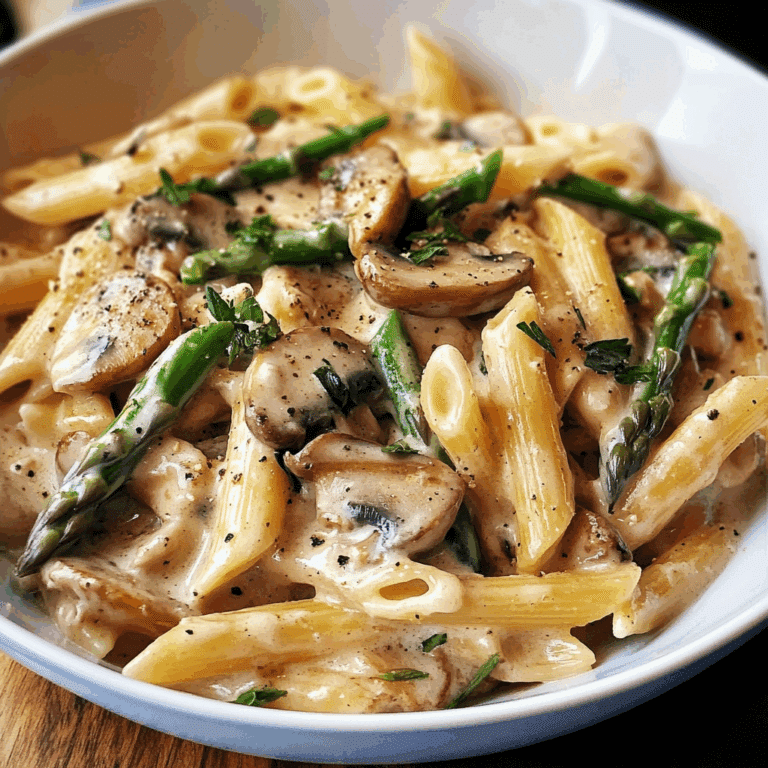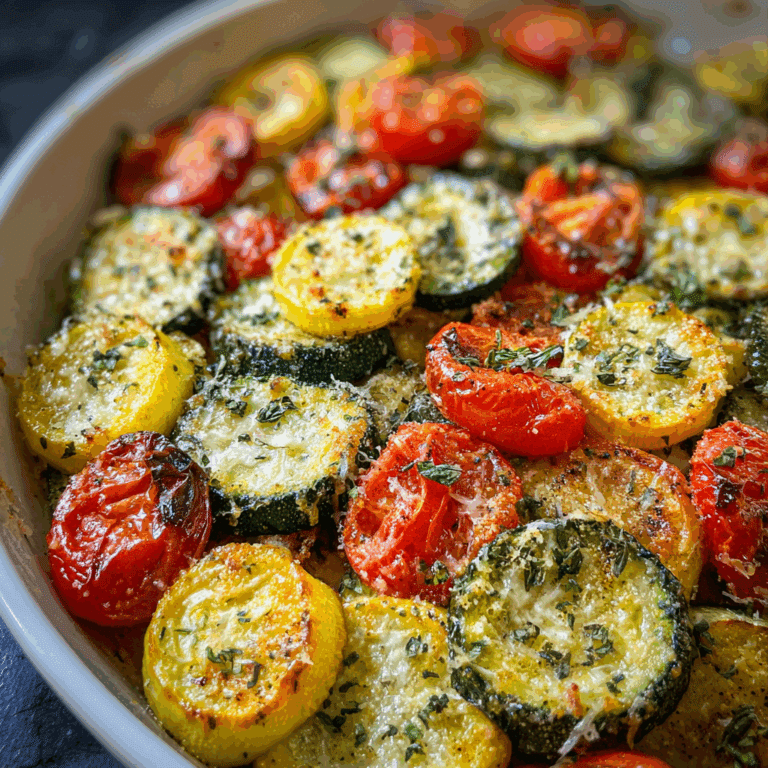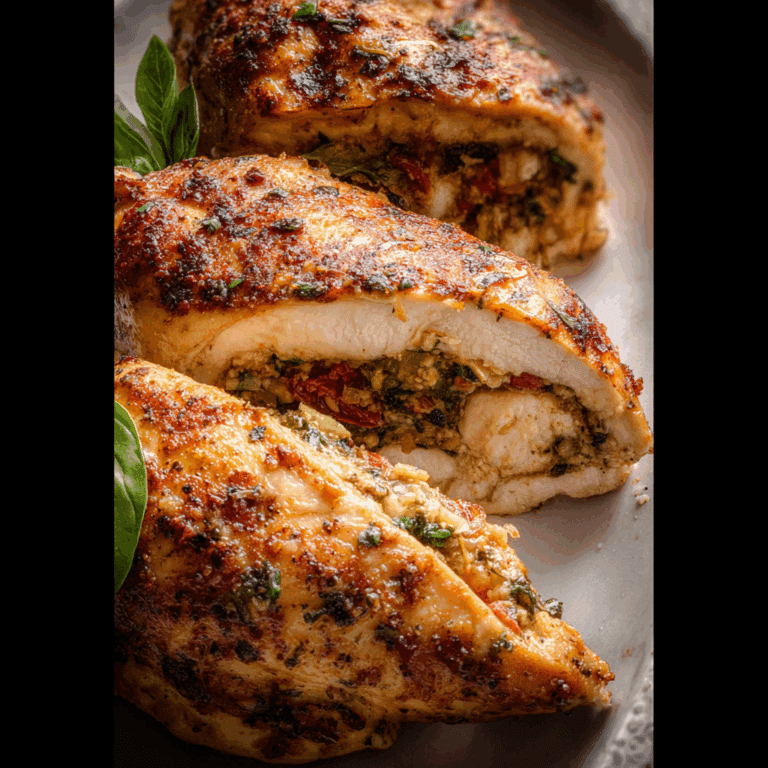Why No Knead Rosemary Bread Is Perfect for Beginners
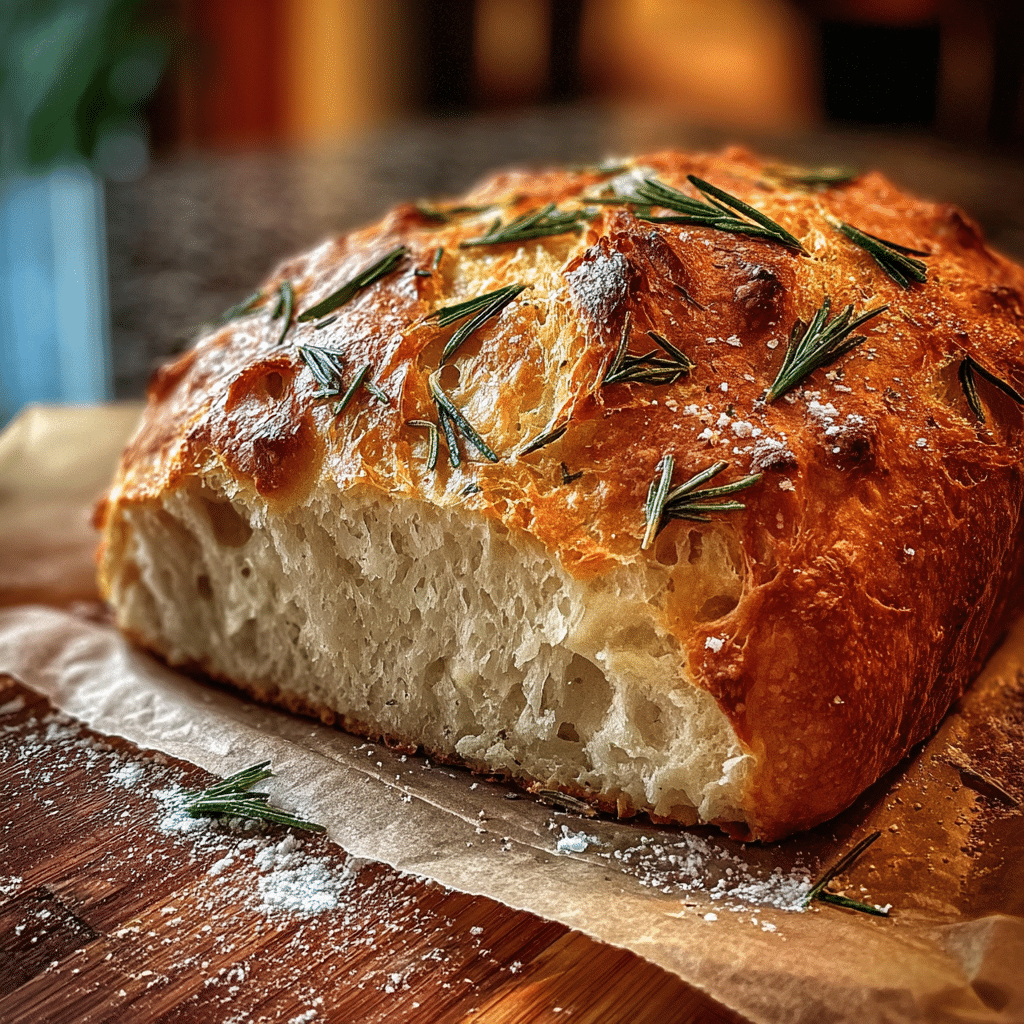
If you’re craving a warm, fragrant loaf that feels like a hug from the inside, then this No Knead Rosemary Bread is exactly what you need. This simple yet aromatic recipe is perfect for beginners because it requires no complicated techniques—just a few basic ingredients and a bit of patience. From the soft crumb to the crisp crust infused with fresh rosemary, it’s the ideal homemade bread to fill your kitchen with irresistible smells and your table with deliciousness. Let’s dive into why this No Knead Rosemary Bread should be your next baking adventure!
Why You’ll Love This Recipe
- Effortless preparation: No need for kneading means even first-timers can create artisan-style bread with ease.
- Flavors that sing: Fresh rosemary infuses every bite with a fragrant, savory note that pairs well with so many meals.
- Minimal ingredients: You can whip up this bread with pantry staples and a handful of fresh herbs—simple yet impressive.
- Perfect texture: Soft, chewy inside and crisp, golden crust outside makes for a truly satisfying loaf.
- Great for any occasion: Whether it’s breakfast toast, sandwich bread, or a side for dinner, it always delivers.
Ingredients You’ll Need
Getting your ingredients right is key to this No Knead Rosemary Bread. Each element plays a vital role—the flour for structure, yeast for rise, and rosemary for that signature aroma and flavor. Here’s what you’ll need:
- All-purpose flour: The base of your dough, offering the right balance to yield a soft crumb and sturdy crust.
- Active dry yeast: Essential for fermentation, giving your bread its airy texture and lift.
- Warm water: Activates the yeast and hydrates the flour for perfect dough consistency.
- Fresh rosemary: Adds a distinctive, herbal fragrance that makes this bread special and inviting.
- Salt: Enhances all the flavors and controls yeast activity for balanced taste and texture.
- Olive oil: Optional, but recommended for a tender crumb and subtle richness.
Variations for No Knead Rosemary Bread
One of the joys of this recipe is how easily you can customize it to suit your taste or dietary needs. Feel free to experiment with different herbs, additions, or flour types to make it your own.
- Herb swap: Replace rosemary with thyme, sage, or oregano for a fresh twist on flavor.
- Garlic infusion: Add minced garlic or roasted garlic for a bold and savory upgrade.
- Gluten-free option: Try using a gluten-free flour blend, adjusting the liquid amounts slightly for perfect results.
- Cheesy delight: Stir in shredded Parmesan or mozzarella for an irresistible cheesy crust.
- Seed topping: Sprinkle sesame, poppy, or sunflower seeds on top before baking for a crunchy contrast and visual appeal.

How to Make No Knead Rosemary Bread
Step 1: Mixing the Dough
In a large bowl, combine the flour, yeast, and salt. Pour in warm water and olive oil (if using), then stir everything together gently until a sticky dough forms. No kneading needed here—just mix until combined.
Step 2: Adding Rosemary
Finely chop fresh rosemary and fold it into your dough, spreading the fragrant herb evenly throughout. This step infuses every bite with delicious flavor.
Step 3: First Rise
Cover the bowl with plastic wrap or a clean kitchen towel and let your dough rise in a warm spot for 12 to 18 hours, or until doubled and bubbly. This slow fermentation develops a chewy texture and deep flavor.
Step 4: Shaping the Loaf
After rising, gently scrape the dough onto a floured surface. Shape it lightly into a ball with your hands without kneading, then let it rest for 30 to 45 minutes while you preheat the oven and Dutch oven or baking vessel.
Step 5: Baking
Place the dough into your preheated Dutch oven, cover with the lid, and bake at 450°F (230°C) for 30 minutes. Then remove the lid to bake for an additional 10 to 15 minutes until the crust turns beautifully golden brown.
Step 6: Cooling
Once baked, transfer your bread to a wire rack and let it cool completely before slicing. This final step ensures the crumb sets perfectly and the crust stays crisp.
Pro Tips for Making No Knead Rosemary Bread
- Use quality flour: Unbleached all-purpose flour gives better flavor and texture.
- Check your yeast: Make sure your yeast is fresh to guarantee a good rise.
- Hydration is key: Slightly sticky dough leads to softer bread—don’t add extra flour.
- Don’t skip resting: The long fermentation time is what transforms simple ingredients into magic.
- Preheat your baking vessel: Hot Dutch oven helps achieve that signature crust and oven spring.
How to Serve No Knead Rosemary Bread
Garnishes
Sprinkle flaky sea salt or drizzle extra virgin olive oil on warm slices to enhance the rosemary aroma and add an extra layer of flavor.
Side Dishes
This bread shines alongside soups like tomato basil or creamy potato, hearty stews, or even a fresh salad, making any meal feel heartwarming and complete.
Creative Ways to Present
Turn slices into gourmet bruschetta with toppings like fresh tomatoes, mozzarella, and balsamic glaze, or serve alongside a cheese board for a rustic, inviting spread at your next gathering.
Make Ahead and Storage
Storing Leftovers
Keep your No Knead Rosemary Bread fresh by storing it in a paper bag at room temperature for up to two days, preserving the crust’s crunch while keeping the inside soft.
Freezing
To enjoy later, slice the cooled bread and freeze in airtight bags for up to three months. This way you can easily thaw slices as needed without sacrificing quality.
Reheating
Warm frozen or leftover bread in a toaster oven or conventional oven at 350°F (175°C) for 5 to 10 minutes to refresh the crust and bring back that fresh-baked aroma.
FAQs
Do I really need to let the dough rise for 12 hours?
Yes! The long fermentation time is crucial for developing flavor and texture in No Knead Rosemary Bread, making it worth the wait.
Can I use dried rosemary instead of fresh?
You can substitute dried rosemary, but fresh tends to provide a brighter aroma and flavor; use about half the amount of dried since it’s more concentrated.
Is a Dutch oven required for baking?
While a Dutch oven is ideal for trapping steam and creating a crusty loaf, you can bake on a preheated baking stone or sheet with a pan of water for steam.
How do I know when the bread is fully baked?
The crust should be deep golden brown and the loaf should sound hollow when tapped on the bottom, indicating a cooked interior.
Can I add other herbs or spices along with rosemary?
Absolutely! Feel free to mix in herbs like thyme or basil, or spices like garlic powder, to customize the flavor profile to your liking.
Final Thoughts
There’s something truly magical about baking your own bread, especially when it’s as uncomplicated and flavorful as this No Knead Rosemary Bread. It’s more than just a loaf—it’s a way to fill your home with cozy aromas and your heart with pride. Whether you’re a baking newbie or someone who loves easy homemade treats, this recipe will quickly become a staple. So grab your ingredients, enjoy the process, and get ready to savor every delicious slice!
Related Posts
- Easy Baked Sweet and Sour Chicken Recipe
- Easy Cream Cheese Chicken Enchiladas Recipe
- How to Make Pepperjack Meatloaf Recipe Perfectly
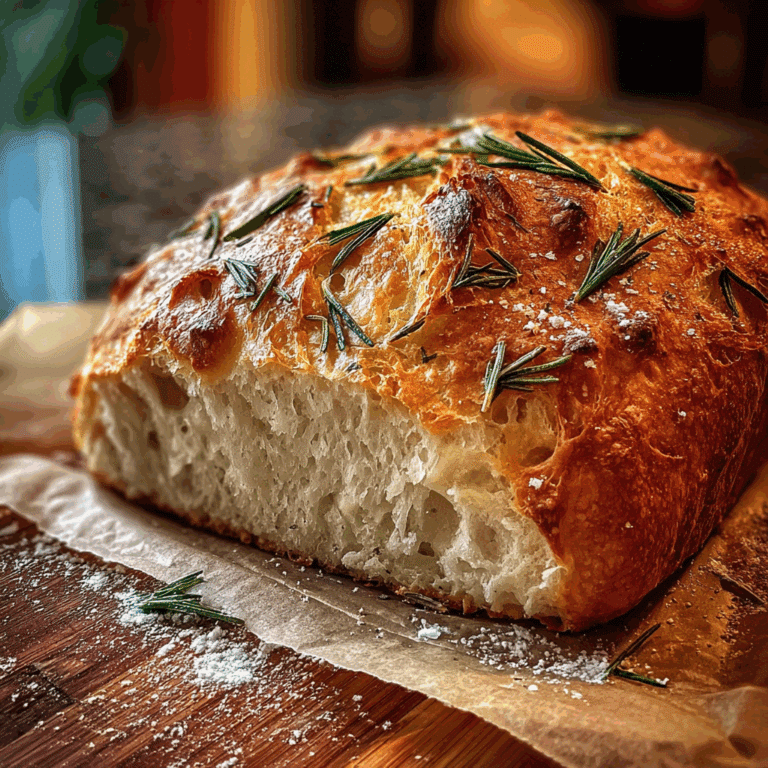
No Knead Rosemary Bread
This No Knead Rosemary Bread is a warm, aromatic loaf with a soft crumb and crisp crust infused with fresh rosemary. Perfect for beginners, it requires minimal ingredients and no kneading, resulting in flavorful artisan-style bread that pairs well with any meal.
- Total Time: 12 to 18 hours 1 hour
- Yield: 1 loaf (about 8-inch diameter) 1x
Ingredients
Main Ingredients
- 3 cups all-purpose flour (unbleached recommended)
- 1/4 teaspoon active dry yeast
- 1 1/4 teaspoons salt
- 1 1/2 cups warm water (about 110°F/43°C)
- 2 tablespoons fresh rosemary, finely chopped
- 1 tablespoon olive oil (optional)
Instructions
- Mixing the Dough: In a large bowl, combine the flour, yeast, and salt. Pour in warm water and olive oil (if using), then stir everything together gently until a sticky dough forms. No kneading is needed—just mix until combined.
- Adding Rosemary: Finely chop fresh rosemary and fold it into your dough, spreading the fragrant herb evenly throughout to infuse every bite with flavor.
- First Rise: Cover the bowl with plastic wrap or a clean kitchen towel and let your dough rise in a warm spot for 12 to 18 hours, or until doubled and bubbly. This long fermentation develops a chewy texture and deep flavor.
- Shaping the Loaf: After rising, gently scrape the dough onto a floured surface. Shape it lightly into a ball using your hands without kneading, then let it rest for 30 to 45 minutes while you preheat the oven and Dutch oven or baking vessel.
- Baking: Place the dough into your preheated Dutch oven, cover with the lid, and bake at 450°F (230°C) for 30 minutes. Then remove the lid and bake for an additional 10 to 15 minutes until the crust turns beautifully golden brown.
- Cooling: Once baked, transfer your bread to a wire rack and let it cool completely before slicing to ensure the crumb sets perfectly and the crust stays crisp.
Notes
- Use quality, unbleached all-purpose flour for best flavor and texture.
- Make sure your active dry yeast is fresh to guarantee a good rise.
- The dough will be slightly sticky; do not add extra flour to keep the bread soft inside.
- Don’t skip the long resting and fermentation time; it’s essential for flavor development.
- Preheat your Dutch oven or baking vessel thoroughly to achieve a crusty, artisan loaf.
- Optional variations include swapping rosemary for other herbs, adding garlic, cheese, seeds, or using gluten-free flour blends with adjusted liquids.
- Prep Time: 15 minutes
- Cook Time: 45 minutes
- Category: Appetizers
- Method: Baking
- Cuisine: American
- Diet: Gluten Free
Nutrition
- Serving Size: 1 slice (approximately 1/12 of loaf)
- Calories: 140
- Sugar: 0.1g
- Sodium: 220mg
- Fat: 3g
- Saturated Fat: 0.4g
- Unsaturated Fat: 2.5g
- Trans Fat: 0g
- Carbohydrates: 26g
- Fiber: 1g
- Protein: 4g
- Cholesterol: 0mg
Keywords: no knead bread, rosemary bread, easy homemade bread, artisan bread, no knead no fuss bread

